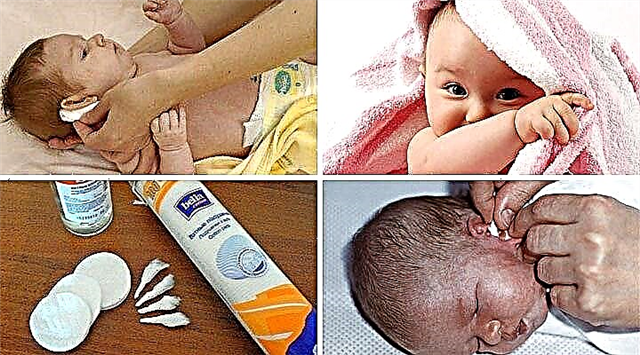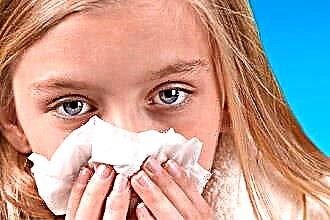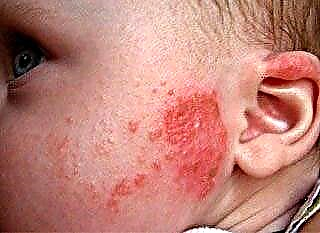Nasal lavage is a safe medical procedure that helps to overcome a runny nose and other diseases of the nasopharynx. It is effective both on its own and in combination with the instillation of drugs.
 When washing, the sputum in the upper respiratory tract is saturated with moisture and washed out, the number of pathogens in the nasal cavity decreases, dry crusts disappear, and breathing is facilitated.
When washing, the sputum in the upper respiratory tract is saturated with moisture and washed out, the number of pathogens in the nasal cavity decreases, dry crusts disappear, and breathing is facilitated.
If you first rinse before instilling drops, the effectiveness of the treatment will increase significantly, since the medicinal substances will penetrate the epithelial cells of the mucous membrane faster and in greater quantities.
Provided that it is carried out correctly, the procedure for washing the nasopharynx is absolutely safe, and it is prescribed even for infants. In this case, it should be carried out only according to the testimony of a pediatrician. It is important that parents know how to properly rinse their baby's nose. You can only use rinsing solutions that are suitable for babies, for example, saline, special saline nasal drops.
In this article, we will tell you how and with what to rinse a baby's nose in order to achieve the best result and not harm the baby's health.
Who needs a nasal lavage?
Washing can be used for prophylactic and therapeutic purposes (in particular, for a cold).
Nasal breathing is very important for a child. Mucus interferes not only with breathing, but also with sucking breast milk, sleeping.
Crusts in the nose can also form in healthy children if the air in the room is dry (especially important during the heating season). To get rid of them painlessly, it is recommended to rinse the nose and then remove them with a tissue or cotton swab. Flushing also helps to clear the nasopharynx of dust, pollen and other suspended matter in polluted air.
For a baby with a cold, saline lavage is one of the few treatments approved by pediatricians.
This procedure helps to reduce the viscosity of the mucus and remove it, making nasal breathing easier.
Thus, it is recommended to rinse the nose under the following conditions:
- when the mucous membrane dries up, the formation of crusts;
- during a cold, in particular with rhinitis (ARVI);
- with allergic rhinitis;
- if dust, pollen, etc. gets into the nose (for example, after walking on a dry hot day).
What are the contraindications to the procedure? There are few of them:
- otitis;
- nose bleed;
- obstruction of the nasal passages;
- complete nasal congestion.
What is needed for the procedure?
Before rinsing, you should prepare everything you need. You will need:
- Washing solution. The main requirements for it are sterility, neutral pH, isotonicity (the correspondence of their osmotic pressure to the blood plasma pressure). Due to these properties, solutions will not only reduce the viscosity of mucus, but also activate the work of the mucous membrane of the upper respiratory tract. Next, we will look at industrial and self-prepared solutions that can be used in infancy.
- Pipette for instilling the nasal passages. Some pharmacy solutions have a bottle for injecting liquid into the nose, however, such devices are recommended to be used when the child reaches 2-3 years old (follow the manufacturer's recommendations).
- Pear - used to suck mucus from the nasal passages after the procedure. Choose a small pear with a soft, thin tip. The pear must be clean. Before and after the procedure, it should be washed in warm water and soap.
It is not recommended to use a pear to inject the solution into the nose of a baby - it creates too much pressure.
- Napkins, a towel, gauze tampons - with their help, the child's face is cleaned after the procedure from the remnants of mucus, crusts, etc.
We wash the baby's nose correctly
Let's talk about how to rinse the nose of an infant and an infant up to one year old. At this age, you cannot rinse your nose "like an adult" using a syringe. It is best to use an eyedropper. Follow this algorithm:
- Put your baby to bed.
- Using a pipette, inject a few drops of the solution into one nostril.
- After a couple of minutes, take a small pear and draw mucus (if any) from your nostril. Part of the sputum during this time will drain down the pharynx into the esophagus - this will not harm the child.
- Repeat the procedure for the other nostril.
- Wipe the baby's face with a napkin, clean the nasal passages with a gauze swab.
Rinsing can be replaced by regular instillation of saline or saline nasal drops. To do this, a drop of solution is injected into each nostril every 1-2 hours.
Washing solutions
How to rinse a baby's nose? For this purpose, both pharmacy and home remedies can be used.
List of the best flushing products:
 Saline solution. This is the most affordable tool, since you can cook it at home. To do this, dissolve a teaspoon of table salt (about 9 g) in a liter of clean boiled water. A saline solution prepared at home is used to rinse a baby's nose only if the parents are completely sure of the quality of the water and the cleanliness of the containers used.
Saline solution. This is the most affordable tool, since you can cook it at home. To do this, dissolve a teaspoon of table salt (about 9 g) in a liter of clean boiled water. A saline solution prepared at home is used to rinse a baby's nose only if the parents are completely sure of the quality of the water and the cleanliness of the containers used.- Physiological solution (in common use - saline), it is also isotonic sodium chloride solution of 0.9%. This is purified water containing sodium chloride, i.e. common salt. Thus, it is essentially the same as saline solution. Its advantage in comparison with homemade saline solution is complete sterility, as well as strict compliance with 0.9% salt concentration. Saline is completely harmless. There is no concept of "overdose" when rinsing the nose with saline. The only drawback of this remedy is that the saline vials are not suitable for washing. In order not to violate sterility, draw up the liquid by drawing it through the lid with a syringe with a needle (without opening the bottle). After that, the needle is removed from the syringe, and it is used as a pipette for instilling the nose.
When using a syringe when rinsing the nose in children, the liquid should be injected into the nasal passages drop by drop, avoiding the injection under pressure.
- Aqua Maris is a preparation designed specifically for rinsing the nasopharynx. It is sterile sea water with a salt content of 0.9%. In addition to sodium chloride, it contains magnesium, selenium, iodine and other trace elements that have a mild antibacterial and thinning effect. Aqua Maris is available in the form of drops, nasal spray and rinsing solution. For infants, it is preferable to use drops. Deep rinsing with a special system at such an early age is not recommended, because the child does not know how to blow his nose, cough up and may choke.
It is undesirable to use sprays due to the anatomical features of the baby - his nasopharynx is relatively short and wide, and spray drops injected into the nose can get into the Eustachian tube, which ultimately leads to eustachitis and otitis media.
- Decoctions of herbs. Among herbs, chamomile has the least allergenic activity. This plant has antibacterial and anti-inflammatory effects. To prepare the broth, pour dry chamomile flowers with boiling water (half a liter of water - half a teaspoon of dried flowers). The mixture is covered with a lid and infused for 20 minutes. For instillation, use a liquid cooled to room temperature.Do not use chamomile decoction too often - it dries out the mucous membrane; it is enough to bury their nose 2 times a day, then sucking mucus with a pear.
There are many other rinsing solutions out there, but most are not suitable for babies.

 Saline solution. This is the most affordable tool, since you can cook it at home. To do this, dissolve a teaspoon of table salt (about 9 g) in a liter of clean boiled water. A saline solution prepared at home is used to rinse a baby's nose only if the parents are completely sure of the quality of the water and the cleanliness of the containers used.
Saline solution. This is the most affordable tool, since you can cook it at home. To do this, dissolve a teaspoon of table salt (about 9 g) in a liter of clean boiled water. A saline solution prepared at home is used to rinse a baby's nose only if the parents are completely sure of the quality of the water and the cleanliness of the containers used.

